Learning to Love Singapore
Excerpted from a journal kept to record four years spent in Singapore
THE PRELIMINARIES
April 17—April 26, 2009
In the last ten days, all we have talked about, thought about, wondered about is what would life be like in Singapore for a 71-year-old couple unfamiliar with Asia. First decision is not to tell the kids until we are sure we want to at least go over for a look-see. I figure they won’t be so keen on this move for their aged parents. Singapore is exactly halfway around the world; 12 hours ahead of Eastern Standard Time. It’s 65 miles north of the equator. Average high temperature year round: 88 degrees F. Two monsoon seasons—long ones. For me, the climate is a plus. But there are two other factual pluses: the national language is English; the standard of living is the fifth highest in the world.
April 27, 2009
Lunch with a Duke scientist who has been in Singapore for some time. I get to ask my questions first:
Travel? The trip takes at least 24 hours, depending on the route. He goes by way of Tokyo (wife’s family lives there), but thinks the Singapore Airlines direct flight from Newark takes “only” 15 hours and costs approx. $2K economy (“don’t!”). He advises business class.
Health care? Very good in Singapore. Duke’s insurance carries.
Housing? You find your apartment the usual way through agents. Most are in high-rise buildings and rents are high rise, too (he pays about $5K a month).
What’s a Singapore day like? “In Singapore, you work, you eat, you shop.” You do not use a car. You ride taxies (abundant and cheap) or the MRT (excellent subway) everywhere. Apparently, you also travel. He’s been to Australia (five hours) and plans to visit India, Thailand, Indonesia, etc.
Now it’s Dale’s turn and the talk turns to how the Duke/NUS system works. Duke’s new medical school is in addition to NUS’s already established British system of medical education (six straight years, beginning right after high school). So why a second one? More doctors needed, more prestige needed (in form of students who go out into the world, in form of scientific papers citing Duke/NUS affiliation). There is a heap load of money that the government intends to use to make an already very prosperous country even more so and to raise the already high standard of living even higher.
. . . I spend the last hour before sleep reading thirty-seven pages about Singapore that Dale pulled off Wikipedia. Interesting place. Clean, safe, hot, humid. I think I would miss American messiness (of government, of society, of individuals) in the face of such domineering tidiness and philosophy (no chewing gum, the death penalty for drug selling and/or using). And the food scares me. It will take a lot of experimenting to find what I might like to order at the Hawker Courts. Probably not curried fish head.
THE FIRST FEW MONTHS
September 24, 2009
We left Chapel Hill exactly a week ago, got to Singapore very early the following Saturday am, staggered around trying to keep from going straight to bed, unpacked into our two-bedroom “service” apartment at Treetops Residences, just off the fabled Orchard Road (shopper’s “paradise”). Ever since, we have been coping—with persistent sleep disorder, stomach disorder, breathing (asthma—mine) disorder, bad tempers, crying (mine), and coping with what absolutely must be done: open bank account, get cell phones, find an apartment, get Dale’s job to take off. So far, not what you’d call easy.
We get free breakfasts weekday mornings at Treetops. I go down about eight and read The International Herald Tribune . . . every word. I feel very cut off from U.S. news here. Even though we watch CNN international every night, it isn’t the same. I even miss Keith Olbermann. Dining with me at breakfast are mostly “ex-pat” families, most of them young—from England, Australia, China, and the United States. There are lots of little children, all behaving very well. The food offered ranges from a few Asian things which don’t tempt me first thing in the am to some more familiar stuff. Great juice. But no decaf coffee. Never? I ask the lovely servers. No, Mum, never. So I bring my own decaf tea bag every day.
September 27, 2009
The first day of week 2. We have managed to accomplish everything but the cell phones. The apartment is ours. We should be able to take possession October 15, which will give us (me) three days to get moved in and set up before we must leave Treetops. Tomorrow I hit IKEA and start picking out the furniture. This will be from scratch. The “partially furnished” part of the deal means that the landlord is including a fridge, a washer (I just remembered I was supposed to ask if it’s Japanese made—Mary F., who has lived here for years, says they only use cold water . . . oh well) and dryer. . . . I love the sweetness of the Singaporeans—from the Treetops maid, Kate (from China), to the two realtors—the general attitude is one of desire to help. The smiles are frequent and always imply the willingness to offer directions, advice, a ride somewhere, information on how to get an EazyLink card (for public transportation—I have one and I have ridden the subway and buses alone, which I consider real acclimation). Singapore strikes me as an odd, but lovable mix of aggressive, booming development and third-world simplicity and sweetness.
October 3, 2009
The High and the Low of It
Dale and I experienced life in Singapore at opposite ends of the spectrum yesterday. He was invited to a ceremony at Nanyang Technical University at which the Duke of York (Prince Andrew—Sarah Ferguson’s ex) was to be present. Dale, wearing his new blazer (the prince would be wearing a suit), was collected at Treetops by a car and driver. He says the ceremony lasted 20 minutes, the prince said not a word, but shared D’s front row seating (though hands were not shaken—phooey).
I, on the other hand, attended a student show at my cousin Ken’s Jarong East (as far as you can ride on the red line subway) school. I met K. in the subway station and we rode for a long time, so long that the subway rails came up out of the ground. On the way, K. pointed out the “blocks” (buildings) in which he and his ex-wife, Peng, owned their two apartments. We got off at the East Jurong station, where I encountered a very different Singapore from the Treetops neighborhood. Scores of tall public housing blocks and some undeveloped land (K. says development in that part of the city is on hold because of the recession. He also says that the population is closer to 6 million than we’ve been told.) We walk through a kind of Singaporean strip mall—little stalls selling necessary stuff like clothes and toothpaste and food, cross a sort of park, cross that, cross a street. and arrive at K.’s school. I still don’t have a clear understanding of exactly what kind of school it is even though Ken has been teaching there since he moved here 17 years ago.
The show itself was, when it finally started an hour late, great. The kids (college age) were talented and funny. Everything was in Chinese. The best bits were the kung fu dancers and the chorus of girl dancers. One of them had studied dance at China’s version of Juilliard. It was very jolly and also heartening to see how much K.’s students seem to like him. He is a good guy who tries very, very hard.
October 6, 2009
The History of Betel Nuts and Peranakan Culture
I’m just back from a visit with Mary F. to the Peranakan Museum—not far from Raffles Hotel—to hear her talk about betel nut chewing to some docents-in-training. Now where else in this world could you go with a fellow Chapel Hillian to learn about betel nut chewing?
Anyway, the whole thing is quite elaborate involving a leaf from the piper betel (kin to the black pepper plant), an areca nut (from a palm tree), and a lime paste (made from limestone or coral). You spread the betel leaf with the lime paste, sprinkle on some sliced and diced areca nut, fold the leaf up, stick the whole thing between your back teeth, and chew on it. This turns your spit, your lips, and your teeth red. You do not swallow anything, but spit it out somewhere (in a spittoon if one is around, otherwise on the street). The result? According to Mary, a rush like unto what you get from very strong coffee. And, according the American docent-in-training who volunteered to try it, a very peppery mouth. Apparently this custom is enjoyed by some of the migrant workers in Singapore. I guess it’s not unlike chewing tobacco, but a lot cheaper—all the stuff except the lime paste can be picked up in one’s backyard. And it’s supposed to be highly addictive.
I learned that Peranakans are the descendants of Southeast Asians (Chinese, Indonesian, and Malayan) who intermarried during the beginnings of travel many centuries ago. Half-breeds, I guess we’d call them, like Louisiana Cajuns. But in Southeast Asia, including Singapore, they are a proud, even aristocratic culture, and this museum displays that culture as expressed in weddings, women’s roles, religion (again a wonderful hybrid). Evidently, there is a large contingent of Peranakans in Singapore, mostly Chinese/Malay, though the cultural parameters have more or less dissolved. That seems obvious—there are so many ethnicities in twenty-first-century Singapore, it would seem next to impossible to keep track of bloodline mixing.
The docents-in-training looked to be mostly ex-pats—Germans, lots of British, some Americans, some Dutch—with a sprinkling of locals. From the clothes, I’d guess the ex-pats are well-off wives who want a way of meeting others like themselves and also want to explore the culture. Being a trainee docent is obviously a good way to do both. Several of the ladies had good haircuts; I was too shy to ask them about salons, but if I joined their ranks . . .
October 27, 2009
Poets and Philosophers
Thanks to John Balaban, a poet and Vietnamese literature expert at NC State, I was aware of an organization here called the National Book Council. I subscribed to its e-mail newsletter and learned there was a literary festival going on, an all-day session on October 26 called “Sharing Borders: Singapore-Malaysia Writers Symposium.” So I went, spent the whole day, and learned a lot. Best was the final panel discussion, “Literature and Nationalism,” moderated by Kirpal Singh (a poet in a dark red turban and beautiful white beard) and featuring a Sri Lankan writer living in Australia, a young Singaporean poet, an older Singaporean poet and anthologist, and a literature professor from the Philippines. There was also an outspoken older woman (my age) named Suchen Lim who seemed to like putting men down. I went to her workshop called “Engaging Singapore Short Stories” and spoke with her later. Also bought two of her books (was going to buy only the stories, but she insisted that I needed to read her novel about Malaysia, where she was born).
e-mail:
Dear John—
Again, thanks so much for putting me in touch with your friend, Edwin Thumboo, who in turn, put me in touch with the National Book Council. I signed up for a symposium they put on Monday about Singapore and Malaysia writers. A Singaporean who has (just?) published a biography of Edwin Thumboo (EDWIN THUMBOO: Creating a Nation Through Poetry) spoke (badly—though the part about his first meetings and interviews with Edwin was good) about teaching Singapore literature at Iowa (he read glowing student evaluations of himself and his course). A wonderful lady from the Philippines read a paper about Edwin’s biblically inspired poems. And Edwin himself wandered around in the crowd so I got to meet him. I gave him your health report—good—which he was glad to hear.
So it’s still a small world after all! Thanks again, so much, for thinking to put me in touch with Singapore’s literary part of it.
Love,
—Shannon
John answered my e-mail by sending me the text of a speech he recently gave at the Air Force Academy. A brave, brilliant speech about war and poetry. Here’s a snippet that I find particularly meaningful in light of the symposium members and also in light of the sign that is on every subway car exhorting the populace here to “use good English.”
“Confucius, the Chinese philosopher to whom the Vietnamese Temple of Literature was dedicated (after the Chinese were driven out of Vietnam) was once asked the perennial philosophic question of 4th century China—as it was the perennial question for Socrates in Plato’s The Republic—‘what would you first do if allowed to rule a kingdom?’ Confucius’ reply, as recorded in his Analects, was ‘to correct language.’ Because, he continued, if language is not precise, ‘then what is meant cannot be effected. If what is meant cannot be effected, society falls apart.’
“The application of the Confucian reply to our affairs today must be obvious.”
Indeed.
Christmas in the Tropics
One last observation today—of the Christmas decorations that are going up on Orchard and Tanglin Roads. I saw the beginnings of the decorations being hung before we left Treetops, but now things are much further along (and it’s not even November!). Singapore, unlike Chapel Hill with its moth-eaten “snowflakes” put up and taken down year after year, hires a new designer every year to design entirely new Christmas decorations. (What do they do with the old ones? Maybe I should suggest that Chapel Hill ask for them.)
This year, the theme seems to be blue and white. There are enormous white and blue plastic snowflakes strung on webs of blue and white lights hanging over the center of the street. Lots of them. Like every 25 feet or so. There are also huge rings around every single tree along the street and hanging from each ring are dozens of giant blue and white Christmas balls.
And on top of every single one of the many, many tall planters and columns along the sidewalks, big, grinning snowmen wearing navy blue rubber boots and top hats. Each of them is carrying a sign advertising Hitachi. Oh, so that’s how it gets paid for? Hitachi has paid a mint, clearly. And I think what I saw today is just the beginning. I’ll go down many more times before Christmas and watch it get added to. Certainly don’t want to miss seeing the lighted vista at night. And this is a tropical country with a mostly Chinese and Indian population. Christmas? Mary F. e-mailed me yesterday about how to get a Christmas tree delivered and then retrieved after the holidays. I think I’m going to take the year off, Christmas decorations-wise. It’s too hot for Christmas trees.
October 30, 2009
I’ve been thinking about that symposium with the Singaporean and Malay writers and how all of them stressed that they just wanted to be known as writers in English (all the speakers were writers who use English), not as Chinese, Singaporean, Malay, Philippine, Indian writers. Echoes of so many writers in the U.S. South who don’t like being called “Southern writers.” I’d like to be known just as a writer, please, as Clyde Edgerton has said so many times.
November 6, 2009
Edwin Thumboo
Susan H., the wife of Woody H., the president of Singapore Management University (who, it turns out, is my cousin by marriage, something I learned when I met him here at a party) invited me to a lecture by “the unofficial poet laureate of Singapore.” This was, of course, Edwin Thumboo. As the guest of the president’s wife, I had a reserved front row seat and a lot of attention from Mr. Thumboo both before and after his talk, during which he thanked “President and Mrs. Howard” profusely. (Woody’s real first name is Howard.) Well, it’s confusing in a land where the Chinese names lead off with the family name. We were handed box lunches before we sat down. We tried to eat them inconspicuously during the talk, but as we were right under the poet’s nose, this was hard to do. Hard, too, as lunch was a dark brown, peeled hardboiled egg floating in a dark brown sauce (soy?) and some green beans that were so hot with red pepper I thought I was going to have to be excused. Mr. T. ate his egg and beans greedily seconds before taking the stage. The talk was rambling and full of self-ingratiating jokes. Well, he’s 75 and obviously enjoying his status. I wish I had such an ego. It would make life so much easier, especially in the realm of public speaking.
November 9, 2009
I love the public transportation in Singapore. And I’m getting pretty good at it. This morning I took myself to the Asian Cultures Museum for a free Monday Morning Lecture, which was boring and depressing—all about how the money-grubbing tourist trade is ruining Asia. The only country the lecturer believes is worth visiting today is Bhutan, the government of which has made it so expensive that not so many tourists can afford it. I had to look it up. It’s between India and China and has a tiny population of about 650,000. It had its first democratic elections in 2008. And it looks pretty damn great. But, OMG, the difficulties of visiting it. Unless I can hook onto a museum tour or something, it’s too complicated for me to figure out. And I doubt I could ever get Dale to go. But I might just drop it into the conversation . . .
November 27, 2009
Black Nuts and Gambling
Another “business” dinner, this time with a Canadian scientist (psychiatry mostly, I think) who invited us to meet him at his favorite Peranakan restaurant, True Blue, next door to the Peranakan Museum of Mary F. and betel nut chewing fame. I got there a little bit late and found Dale and our host the only diners in this beautiful old shop-house-turned-restaurant, full of wonderful Chinese antiques and unusual wall cabinets displaying the blue and white china that my grandparents used every day. The guys were drinking what they told me was “sweet tea”–warm, in cups refilled after every sip by bowing tea-pouring boys. The waiter, who held his hands in prayer position and bowed very low each time he approached the table, brought us the menus. I didn’t recognize a single thing. The Canadian scientist, Michael, did his best to explain stuff and I decided on “fried lobster.” Dale ordered chicken with black nuts. Michael ordered squid and some appetizers for us to share—an okra dish, a salad of banana blossoms, some plain rice. Turned out they had no lobster that night, so I was persuaded to switch to “crayfish” (twice as expensive). Everything came in due course and was pretty much as unrecognizable as the names in the menu. My crayfish was the size of a small anteater, with very long crisp (fried) feelers, cut in half and showing a bit of tough white meat and a lot of red-hot sauce. Dale’s chicken was served with a little teaspoon for reaching inside the huge black nuts (tennis ball size) and extracting their meat. The chicken parts were as if cut from small tree trunks. Michael’s squid looked like squid. The banana blossom salad was okay. Everything else was so hot with chile that we drank great gallons of the tea, as fast as those bowing boys could pour it. No wine—or wine list—was proffered.
Michael is in some way connected to Dale’s new purview—the NRP (the Singaporeans revel in acronyms; NRP stands for Neuroscience Research Program)—and works part-time here in another institute. He is interested in addiction to gambling. How come? It is a major problem here. How so? Chinese culture puts enormous emphasis on “lucky” and by upbringing, all Singaporeans of Chinese descent (the majority) gamble on lucky numbers such as the license plate number of a car in a wreck, not to mention all other forms of gambling. Obesity is his other main interest. How odd, I say—everyone here is thin. Not anymore. Big problem with obesity among Malays, mostly, but also Indians and even some Chinese who are deemed “obese” at a lower body mass number.
I think I will get smarter in Singapore.
I asked Mary F. and Susan H. if they knew this restaurant, True Blue, and they roared with laughter, informing me that I was still too new to appreciate this kind of food, “the best Peranakan food in the world.” They said if we’d go back a year from now, we’d love it. Dale says, thanks, but he won’t try again. His mouth still burns from those big black nuts.
November 29, 2009
The Architect of Singapore Public Housing
Once again, the incomparable Susan H. invited me out—this time, to join her and two friends for lunch. One is Gretchen, 58, an American from Minneapolis who, as an exchange student, met a Singaporean of Indian descent, married him, and moved here in 1975 after she finished her degree in history and a course in Mandarin Chinese (which she speaks fluently). When that young marriage failed in fairly short order, she worked as a journalist for the Straits Times (the big paper here), as curator of the Raffles Hotel Museum, and wrote books—she has published six or seven about the history of Singapore. In 1984, she married another Singaporean (of Chinese descent this time), Liu Thai-Ker. After the lunch—more about it below—I Googled him. Here’s a capsule CV:
“Architect-planner Dr. Liu Thai-Ker studied architecture at the University of New South Wales (UNSW, Sydney), and city planning at Yale University. He later attended Stanford INSEAD Advanced Management Program, Paris, and was conferred Doctor of Science honoris causa by UNSW. Since 1992, he has been Director of RSP, undertaking many architectural urban designs, and planning projects in Singapore and Asia. Larger projects have included the re-planning of close to a dozen cities of 2 to 5 million people each in China, Taiwan, and the Middle East. Dr. Liu previously held senior posts with Singapore’s Housing and Development Board and Urban Redevelopment Authority, and has been closely associated with the implementation of public housing in Singapore and the formulation of a vision for the future urban development of the city. Dr. Liu serves as an Adjunct Professor to the National University of Singapore, and is active on the boards of governmental and arts organizations.”
That little throw-away line, “Dr. Liu previously held senior posts with Singapore’s Housing and Development Board and Urban Redevelopment Authority,” is what’s most interesting (to me) about Liu. Other sites credit him with having invented the Singapore public housing designs, in which 95 percent of Singaporean citizens live as owners. When you see these huge apartment buildings in every direction, in every part of the city/state, you realize the enormity of his contribution.
The fourth person at our lunch was a recently retired editorial director (Editions Didier Millet), Gretchen’s editor. He looks a bit younger than me, but not much and is a kind of typical dour English intellectual. Now working freelance, he has been here for fourteen years.
So Gretchen picked Garabaldi Restaurant. And once we were seated in this beautiful, ultra-modern, cool, quiet place, the owner came over to give her a kiss. (We asked her his name—she couldn’t remember it.) One reason he kissed her was that she’d brought three lambs to the financial slaughter. We split the bill four ways: $82.50 each. In retrospect, it was worth every penny. The food was spectacular.
Singlish
And the conversation was just as good. I learned more about the Peranakan culture, more about the arts, and more about language in Singapore, a big topic here among writers, as I’ve mentioned.
These guys wanted to talk about why “Singlish” has developed so recently. You have to hear Singlish to understand why they are worried about its prevalence—it’s a creole and the reconfiguration of grammar and vocabulary that has developed within it shows up in almost all written communication, from letters to billboards. I asked why they thought this was now the trend when it had not been 20 years or so ago. They said it began when Lee Kuan Yew changed the education system so that all children in the state-supported schools (most Singaporean children) had to be taught English before anything else. While they can also study their “mother tongues” as second languages, English is the official language and all citizens must learn it. Maylay, Mandarin, and Tamil are recognized as Singapore’s second languages (as Spanish is becoming ours) and most subway, bus, highway, etc. signage uses all three plus English—and sometimes Arabic. What’s probably more to the point, most everyone speaks those mother tongues most of the time—at home and in groups of their own “kind.” You never hear teenaged girls (who, dressed in their school uniforms and Converse sneakers, link arms to walk the malls, giggling and ogling, bumping carelessly into elderly U.S. ladies) speaking English. You hear them speaking their “mother tongues.” And when faced with us ex-pats in shops and restaurants and telephone calls, locals pull out their Singlish, which they speak so fast, I always have to ask them to repeat themselves. This is clearly not what Lee Kuan Yew had in mind. He speaks perfect English having been, as an upper-class Peranakan boy, educated in British schools here and in England. It is said that his Chinese is not so good.
December 1, 2009
The Singaporean Guide to Childrearing
I miss the grandchildren a lot. That I do comes home to me every time I look out the living room window down at the kids’ pool in front of our block. There’s almost always a child or two in or near it. Today (a holiday, so everyone is home) there are a brother and younger sister, Chinese. He’s got a pretty big bike. She has a little one. They are riding them back and forth across the little “Empress Bridge” over the channel closest to us. And then they ride them over to their dad who is sitting in one of the pavilions reading a paperback book. He barely looks up, but that they keep coming back to him from their bike rambles around this enormous place with its many pools and gardens and barbecue pavilions and fountains (a kid’s paradise, really) must mean they either like him or at least respect and obey him.
The way the Singaporeans are with their children is fascinating. Children are obviously universally adored here. They do not get left at home. They are everywhere their parents are—in malls by the thousands, in parks, on the street, in restaurants. Push chairs rule! As do the children in them and out of them. And they stay up late. But they are not brats.
You rarely hear random grumpy crying and never see tantrums (well, maybe I’ve witnessed one or two). They are well behaved, independent, and adventurous. It is not at all unusual to see a little kid wandering in the mall with no discernible parent in view. I’m not used to this quite yet; I am still startled and on alert. But usually, it turns out the parent is at the pay desk completing a transaction and the child is just marking time by wandering out from the parent a little bit. There’s no frantic, head-spinning anxiety, no shouts of the child’s name from the parent when he or she isn’t immediately visible. The basis of this attitude seems to be benign negligence, but is really, I think, part of a kind of mutual respect of parent for child and vice versa. (And, of course, the fact that Singapore is safe.)
On this subject, Ken disagrees with me. He thinks the Singaporeans spoil their children. Well, he’s been here a lot longer than I have, but I think he’s wrong. The kids (including his) don’t strike me as spoiled, but rather as collegial. There’s very little baby talk. In fact, parents don’t seem to assume they need to chat with their kids all that much. I think it’s refreshing and the result is unusually attractive children.
Who grow up to be strikingly attractive—personality wise—adults. I especially love the way the service people interact—collegially. The A/C maintenance man (we, as tenants, are required to arrange and pay for quarterly maintenance [S$660 a year]) came yesterday (an hour late—such apologies, by phone and in person). He took all the inside components completely apart, hauled them one by one into Dale’s shower, and washed them. (They all work better today, too.) While he was here, his cell (“mobile,” as they say here) “rang.” The ring was a little girl singing a simple tune in Chinese. I complimented him on this when he was getting ready to go, putting his shoes on outside the service door. He stopped, put everything down, took his shoes back off, and offered to put the “ring” on my phone. Alas, I don’t have Bluetooth and so he couldn’t, in the end, do it. But how nice of him to think of it and to try. Everyone I’ve met here is like that.
TOWARD THE END OF YEAR 2
March 16–20, 2011
Bali
The long-awaited museum-sponsored Painting Bali Tour Susan H. talked me into has come and gone. Everything about those five days was good.
We met at Changi to be checked in as a group. One reason for this was, I guess, that it’s more efficient. Somehow or other, Paul K., our leader, managed to get all our bags checked onto our Air Asia plane at once. Al F. (from the Bronx, age 61) and his partner, Paul R. (Singaporean of Indian/Portuguese descent, age 40-something) each brought a full-sized, wildly decorated plastic suitcase. Against these, my little black thing looked pitiful. What’s in those huge suitcases, I had to ask. “Not much, as we intend to fill them with stuff we buy in Bali,” was the answer. (And they did.)
Halfway through the plane trip, Paul R. leaned across the aisle to say this, “Shannon, I have addressed many manuscripts to you.” Huh? This nice gay Indian Singaporean is a writer? Many manuscripts? Lord. So I said, “I hope I responded to all of them, Paul.” He’s smart and caught on that I thought he meant he’d submitted his own manuscripts to me. He explained that he’d gotten his MA in publishing at NYU (where he and his partner, Al, had met) and spent a summer interning at Curtis Brown Ltd., the literary agency, where one of his chores was packaging manuscripts for submission. Oh! Small world once more.
We arrived in Bali in the evening, were led to a small van, and driven from the airport to our destination town, Ubud, in south central Bali. Said to be the center of Balinese art, Ubud looked, at night, very different from Singapore—that is, there seemed to be at least several hundred thousand motor scooters on the road, no skyscrapers, and lots of narrow streets. We stopped at a restaurant on the edge of town to eat and meet: Paul K. (Singaporean) and Joan K. (American), our two leaders, plus Susan, Shannon, Christy, Al (Americans), Carmen (Mexican), Gisella, Maren, Charlotte (Germans), Jane (British), and Paul R. (Singaporean).
At the big reserved table, I sat next to Paul R. and got his longer story—first-generation Singaporean (his parents are descended from Portuguese traders who settled and intermarried in India) and Catholic, he was tracked from fourth grade on by the Singapore government as a bright child (just like Ken’s son, Lucian), and been given scholarships to the best schools, to NUS and to Harvard, where he got a PhD in something (I can’t remember what), but then decided what he really wanted to be was a publisher or a literary agent and persuaded Singapore to send him for his publishing MA. Imagine. Two graduate degrees, all treats on the Ministry of Education. He’s now working off his bond at A*Star (a government scientific institute) in media. I wondered (silently) how he gets around the “illegality” of homosexuality in Singapore and learned later that that law (presumably to satisfy religious interests) is more or less ignored.
May 6, 2011
Politics and Compulsory Voting
Tomorrow is Parliamentary Election Day. There are 87 seats in Parliament and all of them are up for grabs every five years. Until now, the most the opposition parties have taken in any election are two seats. The seats represent constituencies called either GRCs (I think it means Greater Residential Constituencies) or SRCs (Smaller Residential Constituencies). Voting is compulsory and very carefully monitored. You are fined if you fail to vote and cannot show good cause for that failure. Whereas we, in the cradle of democracy, struggle with voting rights and pathetic electoral turnouts.
According to an article in today’s International Herald Tribune, “This tightly controlled city-state has taken a step into the unknown in advance of its parliamentary elections on Saturday, loosening its grip on political discourse in the unruly world of the internet, where Facebook, Twitter and other social media have amplified a clamor of voices and points of view.” The general consensus seems to be that because of the Internet, the 2011 election will open the door a good bit wider to the opposition. Facebook is estimated to have up to three million Singapore users (the full population, including children, is officially just over five million) and Twitter, 900,000. All seven of the parties—People’s Action Party (PAP, the one in power), National Solidarity Party, Reform Party, Singapore Democratic Party, Singapore People’s Party, Workers’ Party, and Singapore Democratic Alliance—have websites, Facebook pages, and Twitter accounts. It will be interesting to see what happens. As one online commentary asked: “Why must we be so dogmatic about democracy and stability being mutually exclusive?”
May 9, 2011
The election results are in and are, by all accounts, “stunning.” An opposition party—The Workers’ Party—has won six seats and taken two constituencies, giving the PAP its largest ever loss. The paper is now full of interviews of the “contesters” who lost. The gist seems to be that the PAP has some self-scrutiny to do. There were 2.2 million votes cast, 95 percent of the registered voters. None of the articles specify exactly what happens to the people who didn’t vote.
Only a month before we board the airplane home for our summer break.
May 15, 2011
Lee Quan Yew, the Minister Mentor, former Prime Minister (for 31 years) has resigned from the Cabinet along with his successor, Goh Chok Tong, who served from 1990 to 2004, when Lee’s son, Lee Hsien Loong, became PM. Their expressed reason: to allow the new generation of leaders to lead without interference. Lee is 88 and seems to be sharp as a tack. But this looks like a smart move as he had said a few old mannish things during the Parliamentary elections campaign that people in the large GRC the PAP lost held against him. He and Goh will keep their elected seats in Parliament. What an amazing career. I really must read his book, The Singapore Story.
September 10, 2011
Moving on Up
Okay. We’re moving. We’ve got the new signed two-year lease in hand and I’ve been filling out a lot of forms—for the moving company, the realtor, the ceiling fan vendor—with the new address: 4 Keppel Bay Drive, #05-02, The Caribbean at Keppel Bay (better known as just plain “The Caribbean”), Singapore 098637. Same complex, same road, whole different postal code. Seems crazy, but then maybe the postal code here has a different interpretation and use.
When we chose the first apartment here, I admit I was a little embarrassed to have “The Caribbean” in my address. One wishes for something less blatantly “wannabe,” doesn’t one? Then I began to notice that there were others just as bad. One acquaintance lives in “The Hollywood”; another in “The Beverly Hills”; yet another in “The Floridian.” What set the course for these tacky condo names? What was the first one that initiated the trend that’s now, ten years after The Caribbean was christened, even more striving. Here are new ones advertised in today’s Straits Times:
“The Luxurie” (first line of text at the bottom of the de rigueur full-page color ad: “You have arrived at The Luxurie. Conceptualised with meticulous attention to your exacting lifestyle standards, its every detail and element is a reflection of your stature in life.”)
“The Classique”
“Blossom”
“H2O Residences” (“in this idyllic haven along the riverbank, you can immerse yourself in lush greenery and serene riverfront views”)
“Flamingo Valley” (“In land-scarce Singapore, space is a luxury few can afford . . . Flamingo Valley lets you be the privileged few . . .”)
and the winner:
“atreasuretrove” (here the brand flaunts run-together lowercase to . . . what? look like an e-mail address?)
October 12, 2011
Some of the reasons I can get, in spite of myself, a little mushy about Singapore
• The gardeners at The Caribbean. They seem to love taking care of the beautiful plants that surround us. I want to ask them some questions about our ailing heliconia plants, but they don’t speak English. They all seem to be from China or Bangladesh.
• Joyce M., our Filipina “helper.” On Friday, we discovered we share the same birthday, August 13. Mine was 26 years before hers—1938 vs. 1964—but we have a growing bond. Yesterday, while I was shopping for my trip, she dropped the Japanese plate I bought at Pottery Jungle and broke a little hunk off the edge. By the time I got home, she was close to tears, but had mended the plate so perfectly that you can hardly see the crack. I told her I like it better this way because it will always remind me of her. I meant it.
• The way Singaporeans love animals. Last week there was an article about a stray cat (with the typically hokey ST headline: “Finding Purrfect Cause in a Stray”). Bob, the cat, had made himself very popular in his neighborhood on Eng Hoon Street. When he went missing for a few days and then returned with a terrible wound on his stomach, his friends rushed him to a vet and ultimately spent S$20,000 getting him repaired. There’s a great Facebook page. I will send a donation.
• The unselfconscious nutty fun the people indulge in. This morning I ran into an elderly Chinese couple strolling around the big pool with their granddaughter (about twelve years old) and their tiny dog (about the size of a big cat—Bob’s probably bigger). The dog was wearing teensy green rubber boots on each foot and what looked like a hand-woven coat with green stripes to match the boots. The family pretended to be oblivious to the stir the dog was causing.
• The subway. Since first getting here, I have enjoyed riding the “MRT.” Friends, like Susan, prefer the bus system. I love the MRT. I love its perfect adherence to a schedule that never wavers. I love the clean stations, entrances, turnstiles, the “EazyPass” system, the art (yes, art!) in the stations.
ALMOST THE END
February 15, 2012
Film a clef: Politically Incorrect
10 am–12:15 pm Film Group. We watch Blue Mansion, made locally and introduced by Evelyn W., who tells us that it is a “film a clef,” with many clear parallels to the Lee Kuan Yew family. In the movie, the older son, who has no interest in the “family business” (in the movie, this is pineapples) is called upon in his father’s will to take over, even though the younger son has been more or less managing the company for a long time. The older son, who is gay (remember, homosexuality is illegal in Singapore), is married to a controlling executive-type wife. The daughter is an alcoholic virgin. I am confused about which son is supposed to be the current PM, Lee Hsien Loong, but I have to dash off to make a meeting and can’t hang around for the discussion.
1 pm I have an appointment to meet Edmund W., owner of a publishing company, at his office way the hell and gone up near Balestier Road (I think—I give the cabbie the address and he zooms straight to it for a S$12 fare).
I read about Edmund in the Straits Times in the fall because he’d won an award from the government for his decision to put out-of-print Singapore fiction back in print. This sounded just as admirable and impractical as what Louis and I thought we were doing with Algonquin in the early days and I wanted to find out more. I got his e-mail address from Paul R., who knows him from way back. Edmund agreed to meet, to give me a tour of his company offices, and then talk over a hawkers’ stall lunch. It turns out that we talk for a long time in his office (we have so much in common—writers we like, books we’ve recently read, the difficulties of the publishing business—we can’t shut up). On our way to the hawkers’ finally (at, like, 2:45), I tell him about seeing Blue Mansion and ask him if the parallels are real. He cannot believe that I’ve lived in Singapore for two and three-quarters years and have not heard that it’s the PM who is gay (“Just look at his wife, Shannon!”). Because the screenwriter is a pal of Edmund’s from earlier jobs at the Straits Times, he was asked to design the credits, etc., and knows all about the movie’s origins and secrets . . . and fallout. I don’t know if I believe him.
May 30, 2012
My First Singapore Funeral
The past week has offered two firsts—my first Duke/NUS graduation ceremony and dinner and my first Singapore funeral. The graduation was really kind of wonderful. Dale, robed in all his splendor, was on the stage with the big dogs.
The other first, the funeral, was for the mother of my friend Paul R. She was only 75, but already losing her memory. She had a sudden severe heart attack and heart surgery, which failed. I went to the funeral—in a huge Catholic church—because I like Paul and his partner, Al, so much. Unfortunately, I didn’t get a chance to speak to Paul and there was no book for attendees to sign. Curiously, Al didn’t sit next to Paul (although Paul’s brother’s wife sat next to her husband) on the front row with the rest of the family. Hmmm. I guess there are many ways Singapore’s “ignored” law against homosexuality expresses itself. But they are legally married. They accomplished that in New York last summer.
The other nice experience this last week was the little tour of the Tanjong Pagar area I took Dale on. It’s an old part of town with buildings and churches from very early in Singapore’s history. There is a street—Telok Ayer—that runs where once the sea was. All the land to the east of that street is reclaimed. The other reason I like to go there is that the URA (Urban Renewal Authority of Liu Thai-Ker fame) building is there on Maxwell Road and in the building is an extraordinary museum of what the URA does. The best thing it does, from this long-term tourist’s perspective, is make scale models of the city—parts of it as well as the full modern island. Below is one of them. I focused on our little corner. See the tiny island shaped like a grand piano? That is Keppel Island just across from The Caribbean. Our very building can be seen.
The taxi driver who brought us home gave us each a lollipop as we left his cab.
THE ACTUAL END
September 25, 2013 (oops—we stayed one more year than planned!)
Less than a week to go. The apartment is nearly empty. I offered our helper—and very dear friend—Joyce everything she might want. She wanted it all; some for herself, but most for her family back in the Philippines. Being the person she is, the shift from a fully functional abode to the barest minimum has been efficient and without any inconvenience. We will move to a hotel day after tomorrow, Joyce and her friend will give the place a professional cleaning (I’ve already had a “handyman” in to patch the walls), and next Monday we will have the infamous “walkthrough” with our landlord, Calvin Wong. He will, on the basis of the condition of the premises, decide what part of our huge security deposit to return to us.
And the next day we board our plane for the twenty-nine-hour trip home.
Do I hate to leave? No, I’ve been here long enough—long enough to know what makes Singapore such a model of good government, long enough to understand why it’s a model possible for a country with a population of 5 million and impossible for our country of 317 million, or China with its 1.3 billion. I marvel at what I read in the Straits Times: August 19, 2013, headline: “PM Outlines ‘New Way Forward.’” The new way includes “MediShield insurance for all, no age limit or exclusions; more subsidies for outpatient care; top secondary schools to broaden admissions, help for every working family to afford a flat; grants for middle-income to buy 4-bedroom flat; more help for two-bedroomers to upgrade.”
Those are not campaign promises. They are plans that are already being implemented.
But I’ve been here long enough. I miss everything about home, just because it is home.
Will I miss anything in Singapore? Yes, of course. Lots. The swimming, the shopping, the sights and sounds. Most of all I’ll miss the people I have come to know on a daily basis and who, for me, represent the spirit of Singapore: Joyce Moneagudo, the brilliant woman here from her native Philippines in order to give her two children good educations and a better chance in life; Ben Ng, the swimming instructor at our big pool, who teaches, with kind firmness, children (including two of my visiting grandchildren) and never fails to yell, “Hello, Shannon” from the pool when I walk by; the anonymous old sweeper who loves cats (there are lots of strays around) and always salutes me when we pass; the checkout lady at my supermarket who holds my hands in hers as we say goodbye.








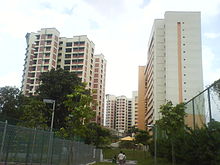
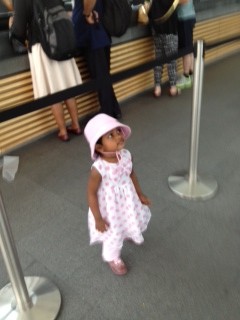

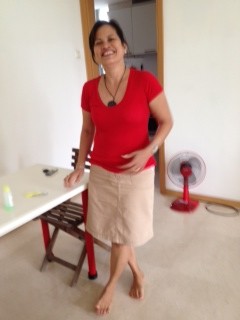
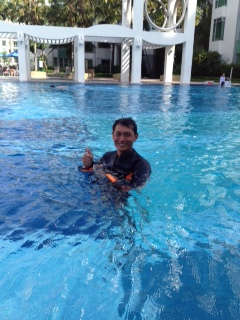
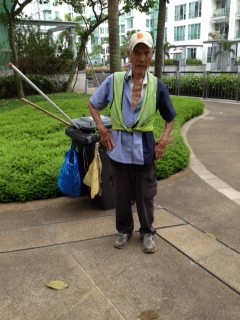
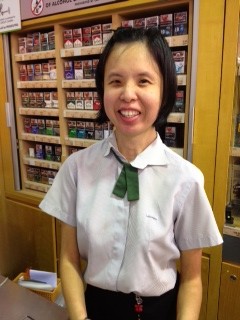
Shannon, this combination memoir/travel writing is wonderful. We knew you were “over there” for years and I knew a little bit about Singapore before today, but you brought everything to life! Bravo.
Corinne